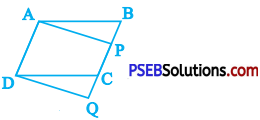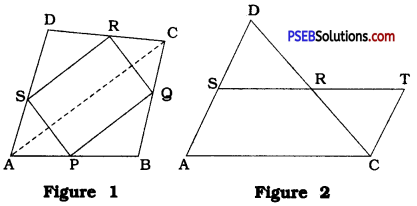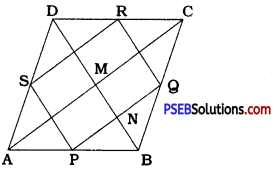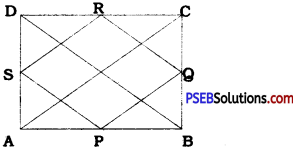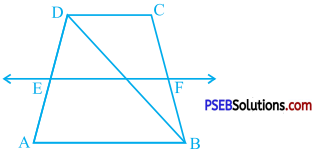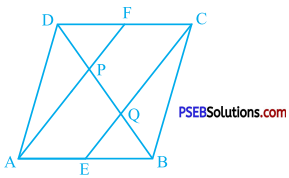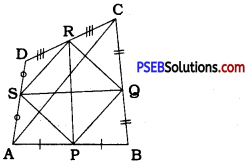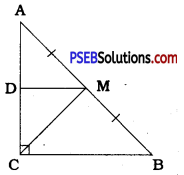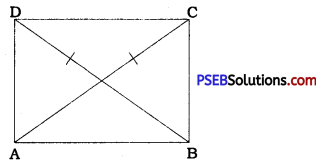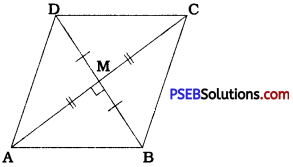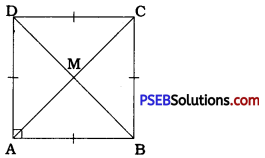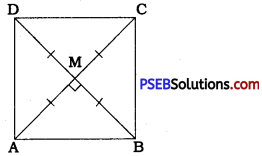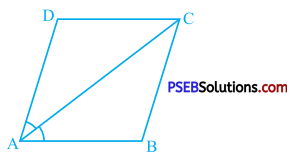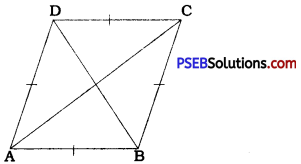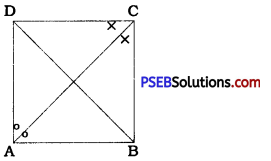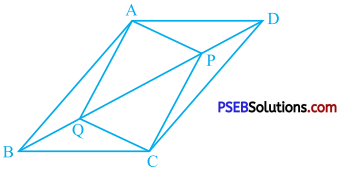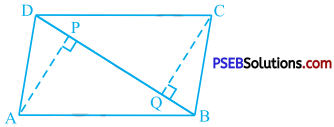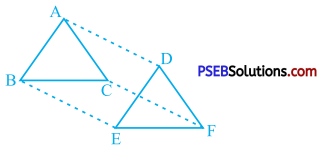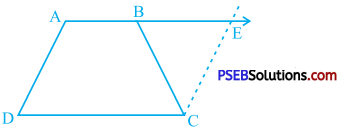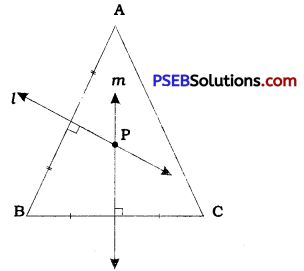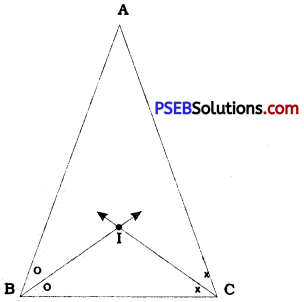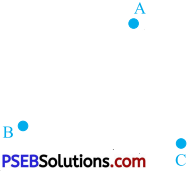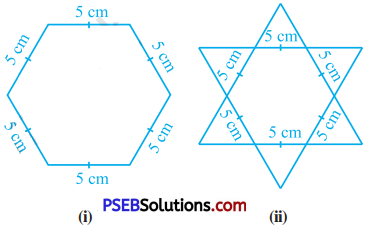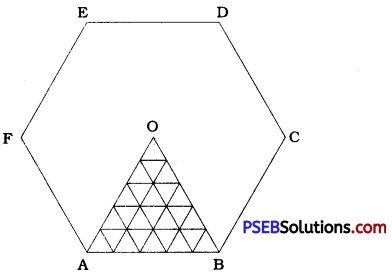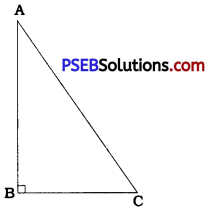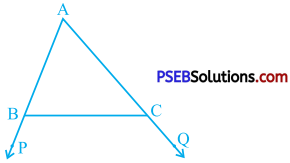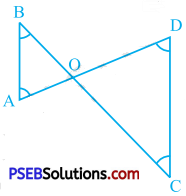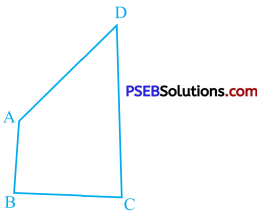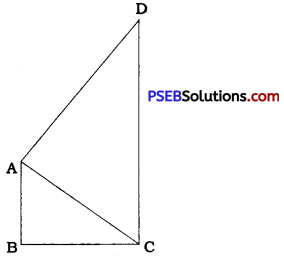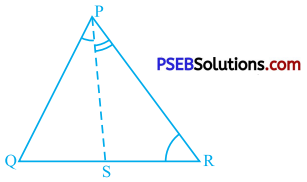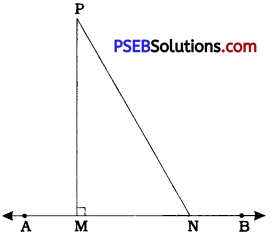Punjab State Board PSEB 9th Class English Book Solutions English Grammar Tenses (Concord and Sequence) Exercise Questions and Answers, Notes.
PSEB 9th Class English Grammar Tenses (Concord and Sequence)
Correct the tense in the following sentences :
(a)
1. They have come yesterday.
2. I have bought this house last year.
3. I am the person who have saved your life.
4. I shall call you when the lunch will be ready.
5. Dinesh will come if you will invite him.
6. I had been to Delhi recently.
7. She is one of those persons who never tells a lie.
8. She is working in the office for two years.
9. I had gone to the club last night.
10. I have written to him yesterday.
Answer:
1. They came yesterday.
2. I bought this house last year.
3. I am the person who has saved your life.
4. I shall call you when the lunch is ready.
5. Dinesh will come if you invite him.
6. I have been to Delhi recently.
7. She is one of those persons who never tell a lie.
8. She has been working in the office for two years.
9. I went to the club last night.
10. I wrote to him yesterday.

(b) 1. I hoped that my friend will help me
2. Take care that you will not be cheated.
3. I know them for the last four years.
4. The patient died before the doctor arrived.
5. Newton has discovered the Law of Gravitation.
6. I am studying hard for the last three weeks.
7. He is suffering from fever since Monday.
8. I had visited Shimla last summer.
9. I am sorry I did not write that letter yet.
10. His younger sister is died.
Answer:
1. I hoped that my friend would help me.
2. Take care that you are not cheated.
3. I have been knowing them for the last four years.
4. The patent had died before the doctor arrived.
5. Newton discovered the Law of Gravitation.
6. I have been studying hard for the last three weeks.
7. He has been suffering from fever since Monday.
8. I visited Shimla last summer.
9. I am sorry I have not written that letter yet.
10. His younger sister is dead.
Put the correct Verbs in the blanks :
1. The tallest of these boys ……….. next door to me. (live, lives)
2. Slow and steady ……….. the race. (win, wins)
3. Neither Ashok nor Prem ………. any right to the property. (has, have)
4. Neither the captain nor the soldiers ……….. been arrested. (has, have)
5. Neither he nor I ……….. money to spare for this. (has, have)
6. You, as well as he, ……….. innocent. (is, are)
7. None but the brave ……….. the fair. (deserve, deserves)
8. The United States ……… a prosperous country. (is, are)
9. The committee ………. divided in their opinion. (was, were)
10. I, who ……….. your friend, will stand by you. (is, am, are)
Answer:
1. lives
2. wins
3. has
4. have
5. have
6. are
7. deserves
8. is
9. were
10. am.
Put the correct Verbs in the blanks :
1. All the players in my team ………. done well. (has, have)
2. Bread and butter ……… what they want. (is, are)
3. Either Sushil or Rakesh ……….. done this mischief…….. (has, have)
4. Neither he nor his servants ……….. honest. (was, were)
5. Neither you nor Sham ……….. to be capable of doing this. (appear, appears)
6. Not only the workman but the supervisor also ………. been dismissed. (has, have)
7. Each day and each hour ……….. its own importance. (has, have)
8. The news of the flood ……….. caused great anxiety. (has, have)
9. The jury ……….. divided in their opinion. (was, were)
10. This is one of the best novels that ………… been published this year. (has, have)
Answer:
1. have
2. is
3. has
4. were
5. appears
6. has
7. has
8. has
9. were
10. have.

Put the correct Verbs in the blanks :
1. The cost of all types of pens ………. gone up. (has, have)
2. Time and tide ……….. for none ……….. (wait, waits)
3. Either you or he ……….. mistaken. (is, are)
4. Either Rajinder or his parents ……… responsible for this. (was, were)
5. Neither you nor I ……… lucky. (am, are)
6. He, as well as you, ……….. to blame. (is, are)
7. None of the ships ……….. rescued from the storm. (was, were)
8. The Arabian Nights ……….. interesting stories. (contain, contains)
9. The crew did ……….. best to save the ship. (its, their)
10. This is one of the most difficult lessons that ……… been taught. (has, have)
Answer:
1. has
2. wait
3. is
4. were
5. am
6. is
7. was
8. contains
9. their
10. have.
Put the correct Verbs in the blanks :
1. The toys that were bought by my son……….. really useful. (is, are)
2. Oil and water ……….. mix. (does not, do not)
3. Neither the judge nor the witnesses ……… him. (believe, believes)
4. Neither the Principal nor the lecturers ……….. present at the meeting. (was, were)
5. Either he or I ……….. wrong. (am, are)
6. The workmen, with their leaders ………. been arrested. (have, has)
7. One of my friends ………. the owner of this factory. (is, are)
8. Good crockery ……….. expensive. (is, are)
9. The jury ……….. divided on the issue. (was, were)
10. I am the one who ………. always stood for justice. (has, have)
Answer:
1. are
2. do not
3. believe
4. were
5. am
6. have
7. is
8. is
9. were
10. has.
Put the correct Verb in the blanks :
1. He ……….. regularly. (work, works)
2. Tobacco and alcohol ………. injurious to health. (is, are)
3. Either the officer or the assistants ………. responsible for this error. (is, are)
4. Me or his friends ………. to blame. (was, were)
5. Neither my brother nor I ……….. ever been to Mumbai. (has, have)
6. The gallery, with its beautiful pictures, ………. a great attraction. (is, are)
7. Either of these two proposals ……….. acceptable to me. (is, are)
8. The West Indies ……….. a land of great cricketers. (is, are)
9. The Assembly ……….. in session.
10. He is one of those leaders who …………. always ready to do or die.
Answer:
1. works
2. are
3. are
4. were
5. have
6. is
7. is
8. are
9. is
10. are.

Use Of Tenses
Tense (काल)-Verb के जिस रूप से यह पता चले कि क्रिया कब हुई है, उसे Tense कहा जाता है। Tense तीन प्रकार के होते हैं
1. Present Tense (वर्तमान काल)
2. Past Tense (भूत काल)
3. Future Tense (भविष्य काल)
प्रत्येक Tense के चार भिन्न-भिन्न रूप होते हैं
1. (i) Present Indefinite Tense (or) Simple Present
(ii) Present Continuous Tense
(iii) Present Perfect Tense
(iv) Present Perfect Continuous Tense.
2. (i) Past Indefinite Tense (or) Simple Past
(ii) Past Continuous Tense
(iii) Past Perfect Tense
(iv) Past Perfect Continuous Tense.
3. (i) Future Indefinite (or) Simple Future
(ii) Future Continuous Tense
(iii) Future Perfect Tense
(iv) Future Perfect Continuous Tense.
(A) Present Tense
1. Present Indefinite Tense प्रयोग – इस Tense का प्रयोग निम्नलिखित स्थितियों में किया जाता है
1. सदा सत्य बातों के लिए:
(The sun shines by day, and the moon by night.)
2. चरित्र-सम्बन्धी स्थायी आदतों के लिए –
(He never tells a lie.)
3. वास्तविक Present और निकट भविष्य के लिए –
1. I understand what you say.
2. He leaves for Mumbai tomorrow.
नियम-
- इस Tense में Verb की पहली फार्म का प्रयोग किया जाता है।
- यदि subject एकवचन हो, तो verb की पहली फार्म के साथ या का प्रयोग किया जाता है।
- Negative तथा Interrogative वाक्यों में Helping Verb के रूप में do / does का प्रयोग किया जाता है।
- बहुवचन subject के लिए do का, एकवचन subject के लिए does का प्रयोग किया जाता है। Does के साथ प्रयोग की जाने वाली Verb की पहली फार्म के साथ s या es नहीं लगाया जाता है।
- I तथा you के लिए प्रयोग की जाने वाली Verb की पहली फार्म के साथ s या es नहीं लगाया जाता है। इनके लिए बहुवचन subject की भान्ति केवल Verb की पहली फार्म का ही प्रयोग किया जाता है।
2. Present Continuous Tense प्रयोग-इस Tense का प्रयोग निम्नलिखित स्थितियों में किया जाता है
1. बोलने या लिखने के समय चल रही किसी घटना का वर्णन करने के लिए; जैसे (He is writing a letter:)
2. किसी आदत अथवा व्यवहार का वर्णन करने के लिए भी कभी-कभी इस Tense का प्रयोग किया जाता है; जैसे
(She is working regularly these days.) नियम- इस Tense के वाक्यों में is / am / are लगा कर Verb के ing. वाले रूप का वर्णन किया जाता है।
Subject + is / am / are + Verb का ing वाला रूप + ………….
Note : Present Continuous Tense तथा Present Indefinite Tense के अन्तर को अच्छी प्रकार समझ लेना चाहिए। निम्नलिखित नियम याद रखिए
Present Indefinite Tense — for habitual actions; for universal truths; for actions going to take place in near future.
Present Continuous Tense — for actions in progress at the time of speaking.
3. Present Perfect Tense प्रयोग-इस Tense का प्रयोग अभी-अभी (वर्तमान में) पूरी हुई किसी घटना का वर्णन करने के लिए
किया जाता है। नियम- इस Tense के वाक्यों में has / have लगा कर Verb की तीसरी फार्म का प्रयोग किया जाता है; जैसे
1. She has just finished her work.
2. I have spent all my money on books.

4. Present Perfect Continuous Tense प्रयोग- इस Tense का प्रयोग तब किया जाता है जब कोई क्रिया भूत काल में आरम्भ हुई हो और अब भी चल रही हो; जैसे
1. He has been reading English for two years.
2. They have been reading this book since morning.
नियम-
(1) इस Tense के वाक्यों में has / have + been + V1-ing + since / for का प्रयोग किया जाता है।
(2) For का प्रयोग तब किया जाता है जब क्रिया के जारी रहने की अवधि (period of time) दी हुई हो; जैसे for fifteen minutes; for half an hour; for a month; for three years ; for a long time.
(3) Since का प्रयोग तब किया जाता है जब क्रिया के आरम्भ होने का निश्चित समय (point of time) दिया हुआ हो; जैसे
since Sunday; since breakfast; since yesterday ; since Diwali; since January 1998; since the first of May.
(B) Past Tense
1. Past Indefinite Tense प्रयोग- इस Tense का प्रयोग तब किया जाता है जब कोई घटना भूत काल में आरम्भ होकर भूत काल में ही समाप्त हो गई हो। (We learnt English at school.)
नियम-
(1) इस Tense के affirmative वाक्यों में Verb की दूसरी फार्म का प्रयोग किया जाता है।
(2) Negative वाक्यों में did not + Verb की पहली फार्म का प्रयोग किया जाता है।
(3) Interrogative वाक्यों में Did + subject + Verb की पहली फार्म का प्रयोग किया जाता है।
(4) Did का प्रयोग करने के बाद सदा Verb की पहली फार्म का ही प्रयोग किया जाता है।
2. Past Continuous Tense प्रयोग – इस Tense का प्रयोग तब किया जाता है जब कोई क्रिया भूतकाल में किसी निश्चित समय पर चल रही हो। (He was writing a letter when I saw him.)
नियम – इस Tense के वाक्यों में was / were लगा कर Verb के ing वाले रूप का प्रयोग किया जाता है।
Note : Past Continuous Tense तथा Past Indefinite Tense के अन्तर को अच्छी प्रकार से समझ लेना चाहिए। निम्नलिखित नियम याद रखिए
Past Indefinite Tense – for completed activity.
Past Continuous Tense – for continuity in past.

3. Past Perfect Tense प्रयोग – इस Tense का प्रयोग तब किया जाता है यदि कोई क्रिया भूतकाल में किसी निश्चित समय (moment) से पहले या किसी निश्चित समय तक पूरी हो चुकी हो।
1. The patient had died before the doctor came.
2. I had finished my work by evening.
नियम – इस Tense में had लगा कर Verb की तीसरी फार्म का प्रयोग किया जाता है।
Note : यदि किसी वाक्य में भूत काल में घटी हुई दो घटनाओं का वर्णन हो, तो उनमें से जो घटना पहले घटी हो उसके लिए Past Perfect Tense का प्रयोग किया जाता है, और जो घटना अपेक्षाकृत बाद में घटी हो उसके लिए Past Indefinite Tense का प्रयोग किया जाता है।
4. Past Perfect Continuous Tense प्रयोग – इस Tense का प्रयोग तब किया जाता है यदि कोई क्रिया भूतकाल में आरम्भ होकर भूतकाल में ही किसी निश्चित समय पर चल रही हो; जैसे(When I reached there at 2 p.m., he had been waiting for me since 1:30 p.m.) नियम – इस Tense के वाक्यों में had + been + V1-ing + since / for का प्रयोग किया जाता
(C) Future Tense
Future Indefinite Tense
प्रयोग- इस Tense का प्रयोग साधारण रूप में भविष्य में होने वाली किसी घटना का वर्णन करने के लिए किया जाता है; जैसे–
(The post will arrive late. We shall start early.)
नियम – इस Tense के वाक्यों में will / shall लगा कर Verb की पहली फार्म का प्रयोग किया जाता है।
Note : Will और Shall सम्बन्धी प्रयोग के लिए निम्नलिखित नियम ध्यान में रखिए
(1) Assertive वाक्यों में
1. यदि किसी भविष्य की घटना का केवल साधारण रूप से ही वर्णन हो, तो-
First Person के लिए shall का प्रयोग किया जाता है।
Second और Third Persons के लिए will का प्रयोग किया जाता है।
2. यदि वाक्य में किसी भविष्य-सम्बन्धी आदेश (command), प्रण (promise), निश्चय (determination), धमकी (threat) आदि का वर्णन हो, तो First Person के लिए will का प्रयोग किया जाता है।
3. यदि वक्ता अपने किसी भविष्य-सम्बन्धी उद्देश्य (intention) को प्रकट करना
चाहता हो तो वह अपने लिए Will का प्रयोग करेगा। अर्थात् ऐसे वाक्यों में First person के साथ will का प्रयोग किया जाता है।
(2) Interrogative वाक्यों में
1. प्रश्न-वाचक वाक्यों में प्राय: Will I और Shall you का प्रयोग नहीं किया जाता है।
2. Third Person के लिए will अथवा shall किसी का भी प्रयोग किया जा सकता है।
Shall he – भविष्य सम्बन्धी आदेश आदि के लिए।
Will he – भविष्य सम्बन्धी साधारण क्रिया के लिए।
Future Continuous Tense –
प्रयोग-इस Tense का प्रयोग तब किया जाता है जब भविष्य में किसी विशेष समय का वर्णन हो, और कोई क्रिया उस विशेष समय से पहले आरम्भ होकर उसके बाद में पूरी होनी हो; जैसे
(We shall be waiting for you when you get back tomorrow).
नियम – इस Tense के वाक्यों में will / shall के साथ be लगा कर Verb के ing वाले रूप का प्रयोग किया जाता है।
Note :
Future Continuous Tense तथा Future Indefinite Tense के अन्तर को अच्छी तरह से समझ लेना चाहिए। निम्नलिखित नियम याद रखिए
Future Indefinite Tense – for an action which begins at a certain future moment.
Future Continuous Tense – for an action which begins before and finishes after a certain future moment.

3. Future Perfect Tense –
प्रयोग – इस Tense का प्रयोग तब किया जाता है जब कोई क्रिया भविष्य में किसी समय से पहले पूरी होनी हो; जैसे
(I will have finished my homework by evening.)
नियम – इस Tense में will / shall + have लगा कर Verb की तीसरी फार्म का प्रयोग किया जाता है।
4. Future Perfect Continuous Tense प्रयोग – इस Tense का प्रयोग तब किया जाता है यदि क्रिया भविष्य में किसी निश्चित समय (point of time) तक अथवा किसी निश्चित अवधिः (period of time) के लिए जारी रहनी हो; जैसे (By six o’clock I will have been sitting here for ten hours.)
नियम – इस Tense में will / shall + have been लगा कर Verb के ing वाले रूप का प्रयोग किया जाता है।
|
Indefinite |
Continuous |
Perfect |
Perfect Continuous |
PRESENT
PAST
FUTURE |
write (s)
wrote
will/shall write |
I am/are writing
was/were writing
I will/shall be writing |
has/have written
had written
will/shall have written |
has/have been written
had been written
will/shall have been written |
Miscellaneous Sentences For Practice
Fill in the blanks with the Present Indefinite form of the verbs given in the brackets :
1. He for a walk every day. (go)
2. She …………………….. up early in the morning. (get)
3. The peon ……………… the bell at 9 o’clock. (ring)
4. I ………………. my parents. (obey)
5. We ……………… our teachers. (respect)
6. We ……………………. our prayers in the morning.
7. She …………………….. sweetly. (sing
8. I do not …………………….. sweets. (like)
Fill in the blanks with the Present Continuous form of the verbs given in the brackets :
1. …………… it …………………… today? (rain)
2. ……….. the peon ……. the bell ? (ring)
3. ………… the boys …………..football ? (play)
4. He ……….. a picture. (paint)
5. We ………… our lesson. (learn)
6. She ……………………. not ……………. food. (cook)
7. I ……………………. a letter. (write)
8. You ………. (run)
Fill in the blanks with the Present Perfect form of the verbs given in the brackets :
1. I ….. my homework. (finish)
2. He …………………… first in the class. (stand)
3. …………you …………. your scooter ? (Sell)
4. ………….. she ……. a car? (buy)
5. They ……………………. their enemy. (murder)
6. We ……………………… the match. (win)
7. The peon ………………….. the bell. (ring)
8. We …….. our duty. (do)
Fill in the blanks with the Present Perfect Continuous form of the verbs given in the brackets :
1. It …………….. since morning. (rain)
2. She ………………….. from fever for a week. (suffer)
3. I ………………….. for you for half an hour. (wait)
4. He ……. his brother with money for five years. (help)
5. We ……………………. for a long time. (fight)
6. She ………………… for a job for several months. (look)
7. ……………………. he books from you since 2011? (borrow)
8. she ………………. in this office since 2013? (work)
Fill in the blanks with the Past Indefinite form of the verbs given in the brackets :
1. India ………………….. independence in 1947. (get)
2. He ………………….. government service in 2012. (join)
3. It …………………… heavily last night. (rain)
4. …………………… he …………… you money? (lend)
5. She ……………………. not ……………………. to my proposal. (agree)
6. Why ……………………. he ……………………. angry with you? (become)
7. The teacher ………………….. the student. (punish)
8. He …………………. to go for a walk daily. (use)

Fill in the blanks with the Past Continuous form of the verbs given in the brackets :
1. It ……………. in the morning. (rain)
2. The peon …… ……………. the bell. (ring)
3. Why …………….. she (weep)
4. She ……………………. clothes. (wash)
5. …………………. she …………………… food ? (eat)
6. …………………. the hunter ……………… birds ? (kill)
7. He a novel ………… (read)
8. My grandmother …………………… a story. (tell)
Fill in the blanks with the Past Perfect form of the verbs given in the brackets :
1. He ………………….. a tiger before I reached the forest. (kill)
2. She …………………… a sweater before I bought a new one. (knit)
3. I ……………….. money from my friend before I received my salary. (borrow)
4. The river ………………….. its banks before the dam was built. (overflow)
5. …………….. she …………… a new dress before his father came ? (buy)
6. Why …………………… he …………….. you before you offended him ? (abuse)
7. My uncle …………………… a new house before he retired from service. (build)
8. ……. you in the race before you defeated him in boxing ? (beat)
Fill in the blanks with the Past Perfect Continuous form of the verbs given in the brackets :
1. We in Delhi for ten years. (live)
2. He ……………….. in this office since 2011. (work)
3. She ……………… in this school for ten years. (teach)
4. ……………. your brother for five years ? (look after)
5. Who …………………. you with money all these years ? (help)
6. The farmer …….. the fields for many days. (plough)
7. The teacher …………………… the students for a long time. (guide)
8. They …….. their country for thirty years. (serve)
Fill in the blanks with Future Indefinite form of the verbs given in the brackets :
1. I ………………… to Delhi. (go)
2. We ……………………. you with money. (help)
3. The peon ………. the bell at 9 o’clock. (ring)
4. ………… she……………….. in time ? (come)
5. …………………… he …………………… you his book ? (lend)
6. She ……………………. a rich man. (marry)
7. The train ………………….. in time. (arrive)
8. They …………………… a match tomorrow. (play)
Fill in the blanks with the Future Continuous form of the verbs given in the brackets :
1. She ……………………. a picture. (paint)
2. I ………………….. a new car. (buy)
3. He ……………………. to Delhi tomorrow.
4. They ………………….. their friends. (help)
5. People ………………….. their work. (do)
6. ……………….. she ………………….. food ? (cook)
7. …………………… they …………………. in the river ? (bathe)
8. He ……………………. not ……………………. his friends. (cheat)

Fill in the blanks with the Future Perfect form of the verbs given in the brackets :
1. She …………………… her work in time. (finish)
2. He ………………….. you with money. (help)
3. They ………………… their clothes. (wash)
4. I ………………….. the situation. (handle)
5. She …………………… her promise. (break)
6. He ……………………. you money. (lend)
7. ……….. you English ? (teach)
8. ………………….. they ……………. bravely ? (fight)
Fill in the blanks with the Future Perfect Continuous form of the verbs given in the brackets :
1. It ………………… for two hours. (rain)
2. They …………….. here for many years. (live)
3. She …………………… English since 2008 (learn)
4. He …………………. Mathematics for many years. (teach)
5. …………………. she ………. in this office since 1985 ? (work)
6. He ……………………. you for a long time. (cheat)
7. They ………………….. the poor since 1982. (help)
8. …… she ……………….. food for the whole family for several (cook)
Concord : Subject-Verb Agreement
1. क्रिया का प्रयोग अवश्य ही इसके कर्ता के अनुसार होना चाहिए।
2. एकवचन कर्ता के साथ एकवचन क्रिया का प्रयोग किया जाता है और बहुवचन कर्ता के साथ बहुवचन क्रिया का प्रयोग किया जाता है।
| Singular Subject – Singular Verb |
Plural Subject – Plural Verb |
This child is very clever.
That book was interesting.
He has many storybooks.
He does not work regularly. |
These children are very clever.
Those books were interesting.
They have many storybooks.
They do not work regularly. |
याद रखें – I के साथ am, was, have तथा you के साथ are, were, have का प्रयोग किया जाता है।
I am / was angry with him.
I have a good English dictionary.
You are / were late for school.
You have a good house.
3. निम्नलिखित क्रियाओं को negative और question form में बदलने के लिए have का प्रयोग किया जाता है, न कि has का –
do, does, did,
will, would, shall, should,
can, could, may, might,
must, need, dare,
ought to, used to
Examples :
- Does she have a new frock ?
- We do not have a high school in our village.
- Did he have his share ?
- I shall have a lot of money next week.
- He used to have a car.
- Mohan must have finished his work.
कुछ वाक्यों में ‘There’ कर्ता का स्थान ले लेता है। वास्तविक कर्ता क्रिया के बाद आता है।
- There is a table in this room.
- There are ten desks in this room.
- There was a clock on the wall.
- There were pictures on the wall.
- There has been a mistake.
- There have been many mistakes.
याद रखिए कि ऐसे वाक्यों में क्रिया वास्तविक कर्ता के अनुसार होती है। यदि वास्तविक कर्ता एकवचन (a table, a clock, a mistake) हो तो क्रिया भी एकवचन (is, was, has) होती है। यदि वास्तविक कर्ता बहुवचन (ten desks, pictures, many mistakes) हो तो क्रिया भी बहुवचन (are, were, have) होती है। परन्तु ‘There’ के विपरीत It’ के साथ सदा एकवचन क्रिया का प्रयोग किया जाता है।
- It is hot today.
- It was 7:30 at that time.
- It has been a mistake.
प्रायः हम एक भूल कर जाते हैं, जिसे “Error of Proximity” कहा जाता है, हम क्रिया को इसके साथ लगती संज्ञा की मात्रा के अनुसार कर देते हैं। निम्नलिखित उदाहरणों में दिखाए अनुसार हमें इनसे बचना चाहिए।
- The quality of the mangoes was (not ‘were) not good.
- His knowledge of Indian vernaculars is (not are) very sound.
- The state of his affairs was (not ‘were) such as to cause anxiety to his parents.
- The results of the new policy are (not is) very encouraging.

4. and’ द्वारा जोड़े गए दो या दो से अधिक एकवचन संज्ञाओं या सर्वनामों के साथ बहुवचन क्रिया का प्रयोग किया जाता है। जैसे –
- Gold and silver are precious metals.
- Fire and water do not agree.
- Are your father and mother at home ?
- He and I were playing.
परन्तु यदि संज्ञाएं हमारे दिमाग को एक विचार देती हैं, अथवा किसी एक ही व्यक्ति अथवा वस्तु की ओर संकेत करती हैं, तो एकवचन क्रिया का प्रयोग किया जाता है। जैसे –
- The horse and carriage is at the door.
- Bread and butter is his only food.
- Honour and glory is his reward.
- The novelist and poet is dead.
5. एकवचन के साथ with, as well as, आदि द्वारा जोड़े गए शब्द उपवाक्य सम्बन्धी होते हैं। इसलिए एकवचन क्रिया का प्रयोग किया जाना चाहिए; जैसे –
- The house, with its contents, was insured.
- The Chairman, with the directors, is to be present.
- The ship, with its crew, was lost.
- Silver, as well as cotton, has fallen in price.
- Sanskrit, as well as Arabic, was taught there.
- Justice, as well as mercy, allows it.
6. or अथवा nor द्वारा जोड़े गए दो या दो से अधिक कर्ताओं के साथ एकवचन क्रिया का प्रयोग किया जाता है। जैसे –
- No nook or corner was left unexplored.
- Our happiness or our sorrow is largely due to our own actions.
- Either the cat or the dog has been here.
- Neither food nor water was to be found there.
- Neither praise nor blame seems to affect him.
7. जब or अथवा nor द्वारा जोड़े गए कर्ताओं में से एक बहुवचन हो, तब क्रिया भी बहुवचन होनी चाहिए, और बहुवचन कर्ता को क्रिया के समीपतम् रखना चाहिए; जैसे –
Neither the chairman nor the directors are present. जब or अथवा nor द्वारा जोड़े गए कर्ता अलग-अलग सर्वनामों से सम्बन्धित हों तो क्रिया समीपतम् सर्वनाम के अनुसार होनी चाहिए; जैसे –
- Either he or I am mistaken
- Either you or he is mistaken.
- Neither you nor he is to blame.
- Neither my friend nor I am to blame.
Either, neither, each, everyone, many a के साथ एकवचन क्रिया का प्रयोग किया जाना चाहिए; जैसे
- He asked me whether either of the applicants was suitable.
- Neither of the two men was very strong.
- Each of these minerals is found in India.
- Everyone of the boys loves to ride.
- Many a man has done so.
ऐसी दो संज्ञाएं जिनसे पूर्व each अथवा every लगा हो और वे and द्वारा जुड़ी हुई हों, तो ऐसी स्थिति में उनके साथ एकवचन क्रिया का प्रयोग किया जाता है जैसे –
- Each boy and each girl was present in the class.
- Every table and every chair has been dusted.
8. कुछ संज्ञाएं जिनका रूप बहुवचन में होता है, परन्तु जिनका अर्थ एकवचन में होता है, ऐसी संज्ञाओं के साथ एकवचन क्रिया का प्रयोग किया जाता है; जैसे –
- The news is true.
- Politics was with him the business of his life.
- The wages of sin is death.
- Mathematics is a branch of study in every school.
कुछ संज्ञाएं जिनका रूप एकवचन में होता है, परन्तु जिनका अर्थ बहुवचन में होता है, ऐसी संज्ञाओं के साथ बहुवचन क्रिया का प्रयोग किया जाता है; जैसे – Twelve dozen cost one hundred rupees.
9. किसी समूह-वाचक संज्ञा के साथ एकवचन क्रिया का प्रयोग होता है जब उस समूह को समूचे पूर्णांक के रूप में ले लिया जाए; और बहुवचन क्रिया का प्रयोग तब होता है जब उसी समूह को उसकी विभिन्न इकाइयों के रूप में लिया जाए; जैसे –
1. The committee has issued its report.
2. The committee are divided on one minor point.
परन्तु हमें समरूप होना चाहिए। इस प्रकार, हमें कहना चाहिए :
The committee has appended a note to its (not their) report.

10. जब कोई बहुवचन संज्ञा किसी एक वस्तु अथवा किसी सामूहिक इकाई का एक विशेष नाम हो, तब इसके साथ एकवचन क्रिया का प्रयोग किया जाना चाहिए; जैसे –
- The Arabian Nights is still a great favourite.
- The United States has a big navy.
- Plutarch’s Lives is an interesting book.
- Gulliver’s Travels was written by Swift.
11. जब कोई बहुवचन संज्ञा किसी ऐसी विशेष संख्या अथवा मात्रा की ओर संकेत करती है जिसे एक समूचा पूर्णांक माना गया हो, तब क्रिया प्रायः एकवचन होती है; जैसे –
- One hundred paise is equal to one rupee.
- Six miles is a long distance.
- Fifty thousand rupees is a large sum.
- Three parts of the business is left for me to do.
Complete these sentences with one of the two verbs given in brackets :
1. They ……….. going to report the matter to the Principal. (is / are)
2. She ………… not have any chance of winning the election. (do / does)
3. The teacher does not ……….. much work to do. (has / have)
4. ……….. you have any money with you ? (Do / Does)
5. Doesn’t Chennai ……….. a severe winter ? (has / have)
6. ………… the men shouting loudly ? (Was / Were)
7. Can we ………… coffee instead of tea ? (has / have)
8. Don’t the students ……………. their books with them ? (has / have)
9. ……………. your friend visit you daily ? (Do / Does)
10. They needn’t …………… gone there so early. (has / have)
Answer:
1. are
2. does
3. have
4. Do
5. have
6. Were
7. have
8. have
9. Does
10. have.
Choose the correct verb out of the two given in brackets and rewrite the sentences :
1. The cause of both the accidents (was, were) the same.
2. Each of the boys (has, have) done his homework.
3. All my friends (has, have) joined this college.
4. (Have, has) either of you any money?
5. Everyone of us (is, are) going to the film.
6. Both the rooms (was, were) whitewashed…
7. One of the debators (was, were) very interesting.
8. The furniture (is, are) to be sold today.
9. A few sheep (was, were) running about in the field.
10. Neither Manu nor Misha (was, were) with us today.
Answer:
1. was
2. has
3. have
4. Has
5. is
6. were
7. was
8. is
9. were
10. was.

Sequence Of Tenses
यदि मुख्य-वाक्य की क्रिया Present Tense में हो, तो उपवाक्य की क्रिया किसी भी Tense में हो सकती है; जैसे
1. He assures me that the train has arrived.
2. He says she will come at 4 p.m.
3. The Principal declares that latecomers will be fined.
4. Subhash says that they had been sitting there for two hours.
5. The witness affirms that the accused is not guilty.
2. यदि मुख्य वाक्य की क्रिया Future Tense में हो, तो उप-वाक्य की क्रिया किसी भी Tense में हो सकती है; जैसे
1. He will assure me that the train has arrived.
2. He will assure me that the train had arrived.
3. He will say that Ramesh is late.
4. He will say that Ramesh was late.
5. He will tell us that Radha is waiting for us at the bus stop.
3. यदि मुख्य-वाक्य की क्रिया Past Tense में हो, तो उप-वाक्य की क्रिया भी Past Tense में ही होनी चाहिए। (किन्तु यदि उप-वाक्य में किसी Habit या Universal truth का वर्णन हो, तो इसकी क्रिया Present Tense में ही रहती है।)
1. He assured me that the train had arrived.
2. She said that she would come at 4 p.m.
3. The Principal declared that latecomers would be fined.
4. He told me that he never tells a lie.
5. The teacher said that honesty is the best policy.
If Patterns
(If से आरम्भ होने वाले उप-वाक्य) नीचे दिए गए चार्ट को सदा ध्यान में रखिए- ‘.
| If Clause |
Main Clause |
I Form
II Form
Had + III Form |
will + I Form
would + I Form
would have + III Form |
नोट : Until और unless से आरम्भ होने वाले उप-वाक्यों में भी यही नियम लागू होते हैं।
Examples :
1. If you play the piano, I will sing.
If you played the piano, I would sing.
If you had played the piano, I would have sung.
2. He will beat the thief if he catches him.
He would beat the thief if he caught him.
He would have beaten the thief if he had caught him.
3. The horse will kick you if you go near it.
The horse would kick you if you went near it.
The horse would have kicked you if you had gone near it.
4. He will not play tennis if you do not give him a racket.
He would not play tennis if you did not give him a racket.
He would not have played tennis if you had not given him a racket.
5. He will walk to the station if he is well.
He would walk to the station if he was well.
He would have walked to the station if he had been well.

6. My servant can paint your boat if you give him a brush.
My servant could paint your boat if you gave him a brush.
My servant could have painted your boat if you had given him a brush.
![]()





